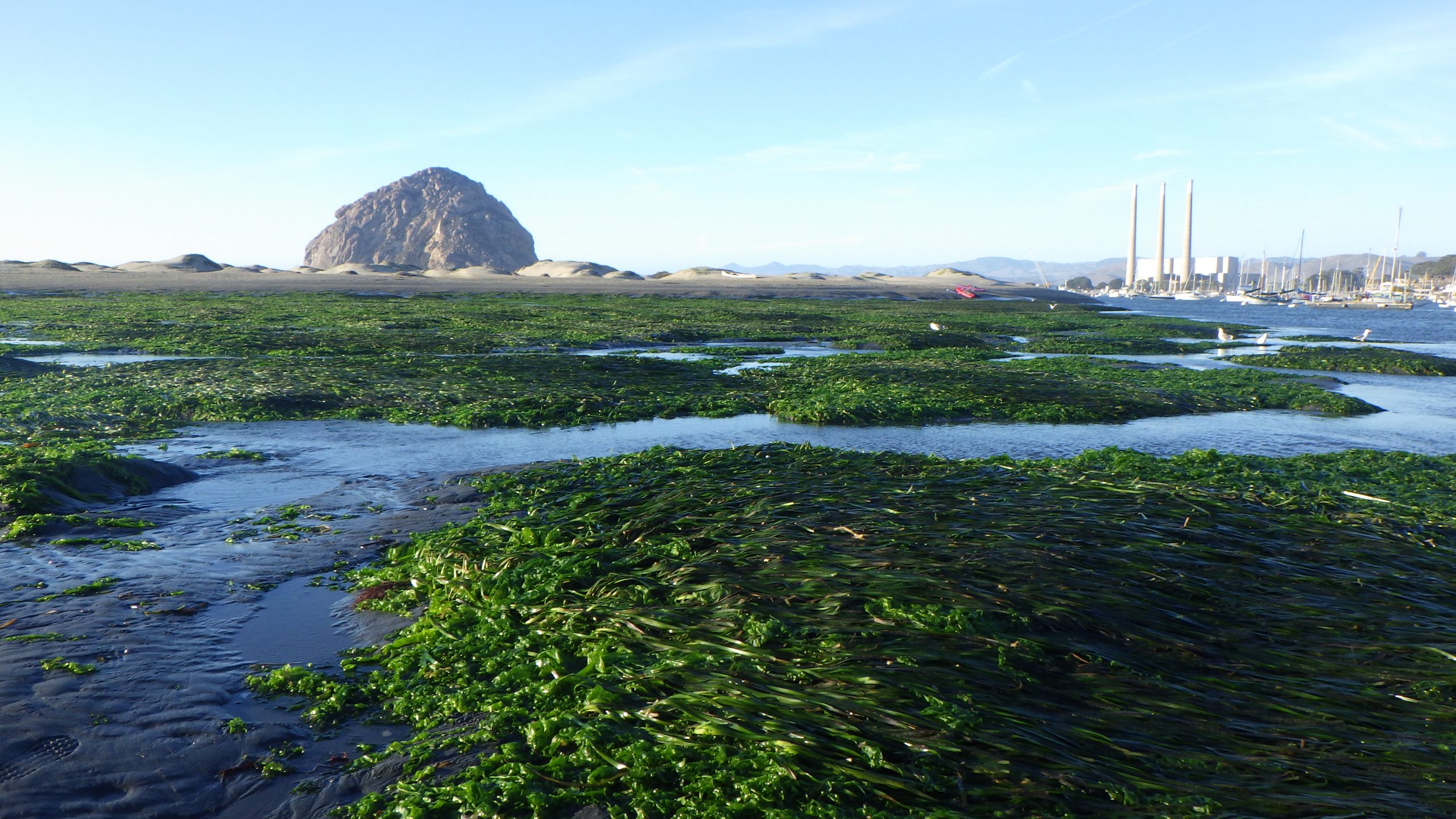
What is Eelgrass?
Eelgrass is a flowering plant that puts down its roots in our bay floor, forming beds that provide important ecological benefits. Eelgrass serves several important functions in the estuary, providing shelter for both juvenile fish and invertebrates, surfaces for fish like Pacific herring to lay eggs, foraging habitat for shorebirds at low tide and for diving birds at high tide, and critical habitat for migratory and wintering shorebirds along the Pacific Flyway.
In addition to habitat, eelgrass provides many ecosystem benefits. Eelgrass improves water quality by filtering out excess nutrients, increasing oxygen levels, and stabilizing sediment to help keep the waters clear. This stabilization of sediment also helps mitigate coastal flooding and erosion. Seagrasses also sequester carbon and reduce the impacts of ocean acidification.
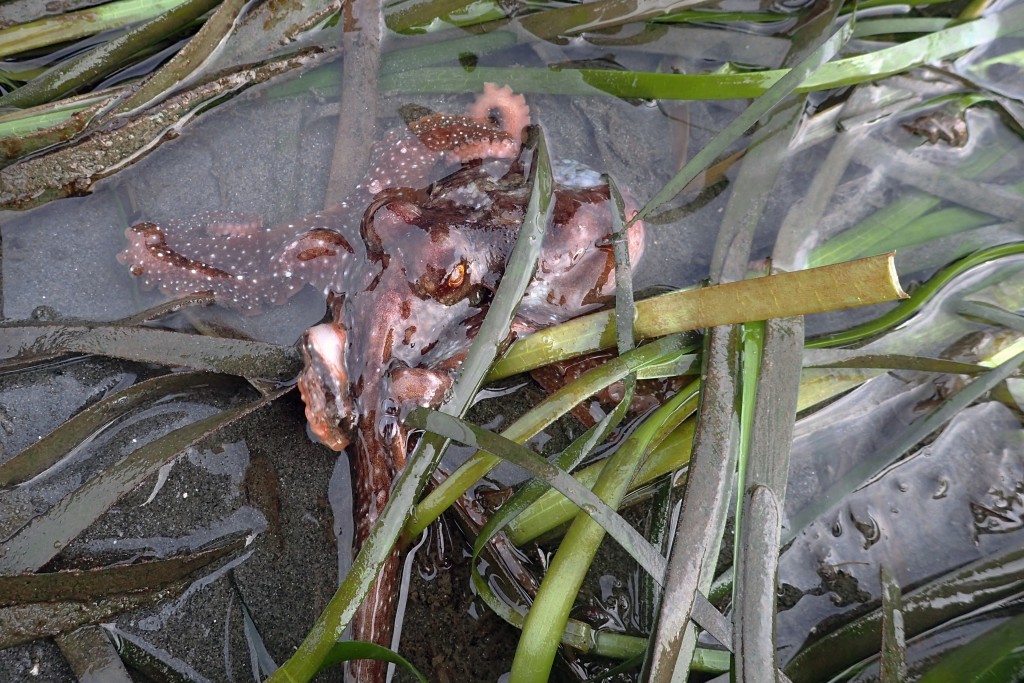
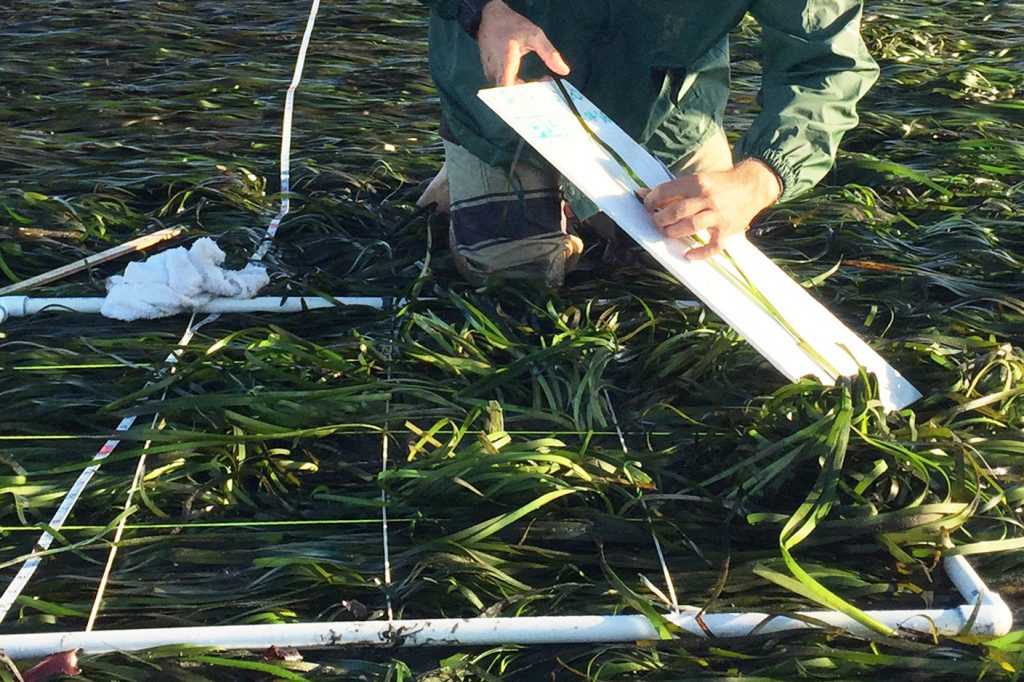
The History of Eelgrass in Morro Bay
The Estuary Program has been mapping eelgrass habitat for over two decades. Multiple methods have been used including aerial flights, sonar, and drones, with total acres fluctuating over time given changing estuary conditions, time of year, and method of mapping.
From 2007 to 2016, eelgrass in Morro Bay declined by more than 90%, with 13 acres mapped in 2017. In 2017, eelgrass began to re-establish in areas where it had previously declined. Subsequent mapping efforts have shown a steady increase: 146 acres in 2020, 500 acres in 2021, and 750 acres in 2023.
Although the reasons for the decline and the rapid recovery are not fully understood, there are likely multiple factors including changes in water quality and shifts in the bay floor elevation that played a role. Restoration efforts also provided support by reintroducing eelgrass to areas where it had been lost, aiding expansion through root growth and seed dispersal.
For more discussion of eelgrass recovery and its future in Morro Bay, check out this blog post.
Timeline of Eelgrass Acreage in Morro Bay
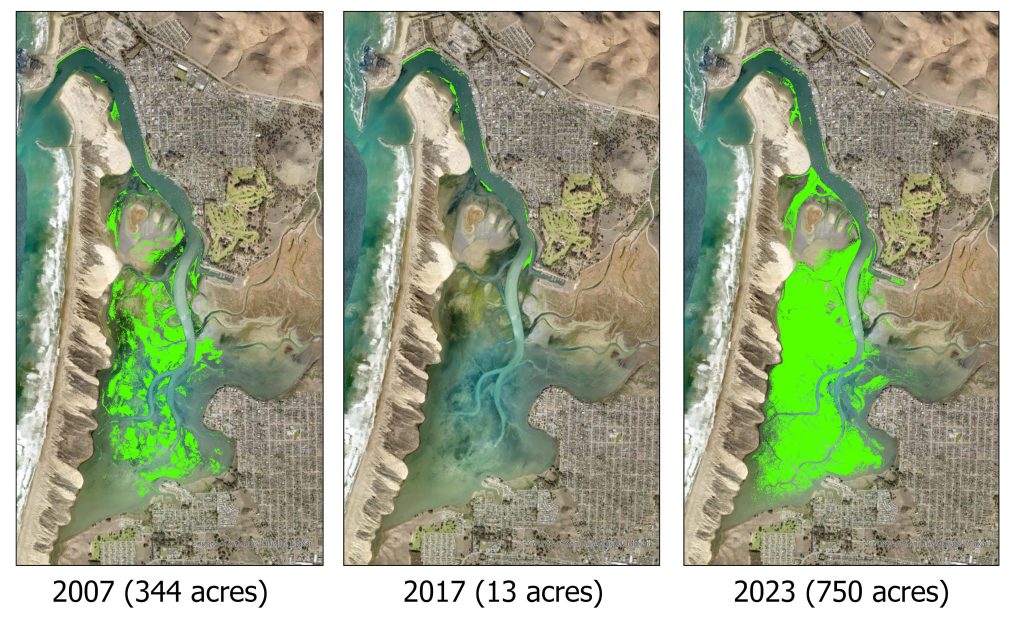
Eelgrass Monitoring & Research
The decline of eelgrass in Morro Bay has driven many monitoring, research, and restoration efforts. The Estuary Program has partnered with Cal Poly and Cuesta College, among others, to better understand possible impacts to eelgrass and expand monitoring of water quality (e.g., temperature, dissolved oxygen, turbidity), nutrients, and bathymetric monitoring. Shifting conditions in water quality and bay elevation can impact eelgrass extent in the bay.
Our Monitoring Program also conducts annual baseline monitoring of eelgrass health, with reports viewable on our library page. Our monitoring indicates an increase in macroalgae in recent years, and in some places it has crowded out eelgrass. Given the dynamic nature of the estuary, we will continue to track total acreage and eelgrass health.
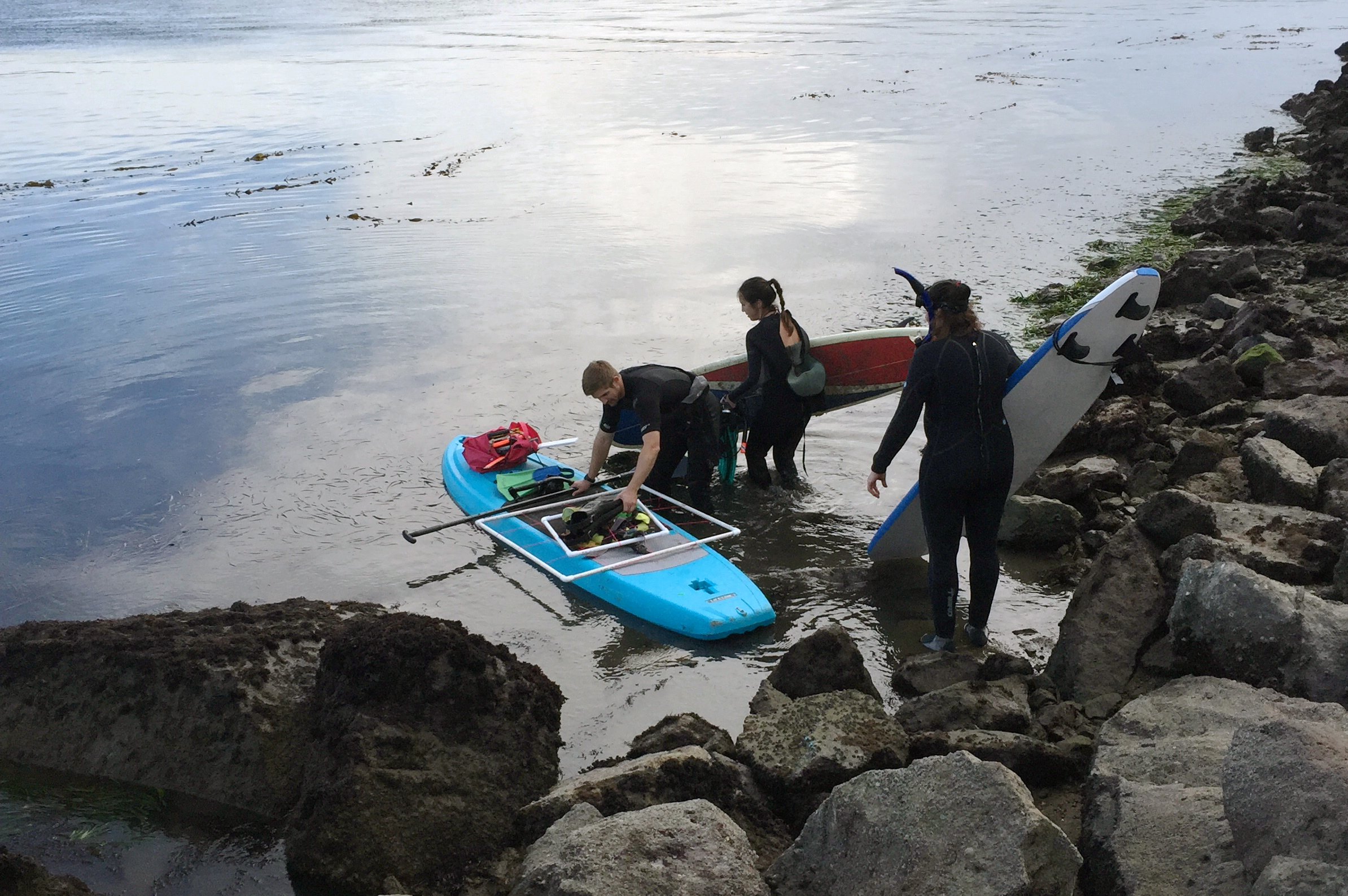
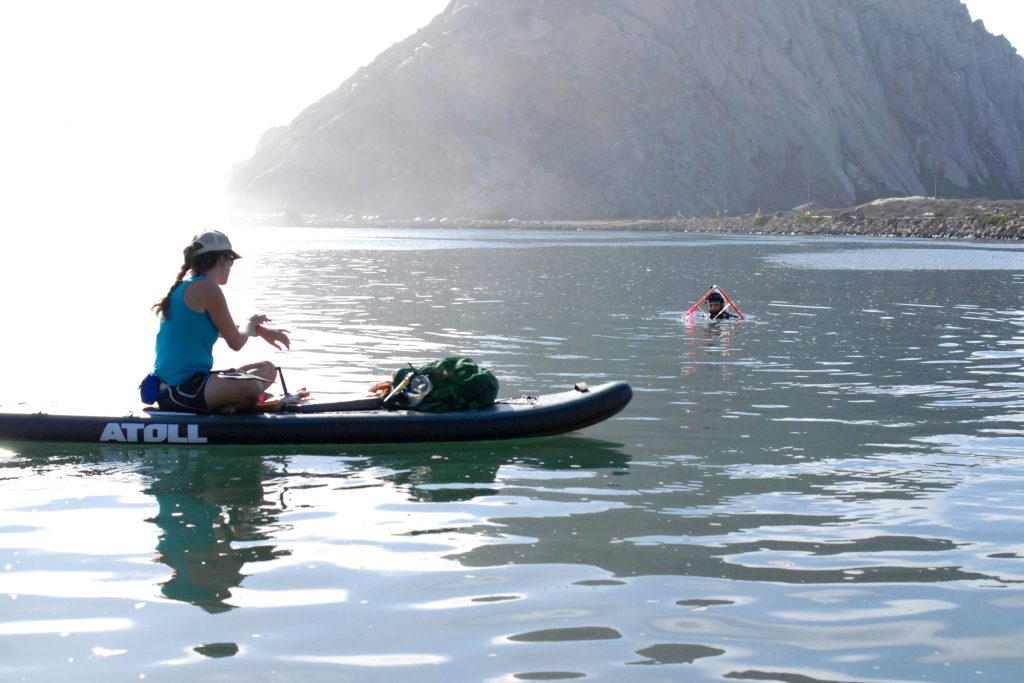
Restoration Work
The Estuary Program and our partners made significant effort to restore eelgrass. Three large-scale transplanting efforts occurred during the summers of 2012, 2013, and 2014. This work wasn’t very successful, as the conditions that caused the decline were likely still in effect. But the work did provide valuable scientific knowledge and brought the local community together to help maintain this valuable habitat in the bay. Starting in 2017, the Estuary Program and partners began pilot restoration efforts, increasing the scale of planting each year through 2021. Plants were harvested from healthy beds in the front of the bay and transplanted to areas throughout the mid and back bay where eelgrass had been lost. With the eelgrass acreage rebound, restoration efforts were no longer needed, and the work was halted after 2021.
We are grateful for the strong partnerships, volunteer support, and the generosity of funders who made the restoration work possible. Many thanks to California Department of Fish and Wildlife Duck Stamp Project, Pacific Marine Estuarine Fish Habitat Partnership, Restore America’s Estuaries Coastal Watershed Grant, US Fish & Wildlife Service, National Oceanographic and Atmospheric Administration’s Sea Grant program, and the Black Brant Group for their support.
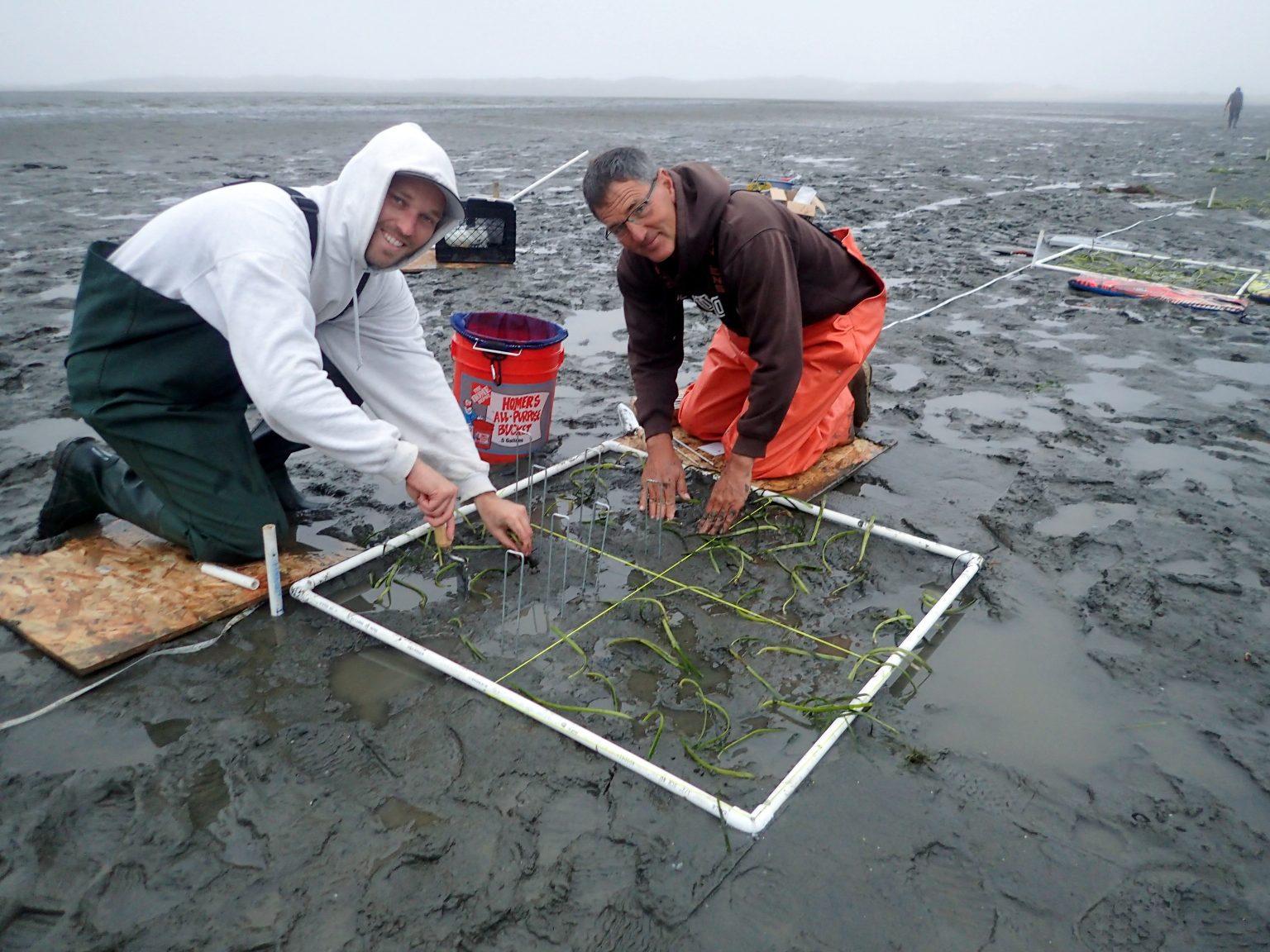
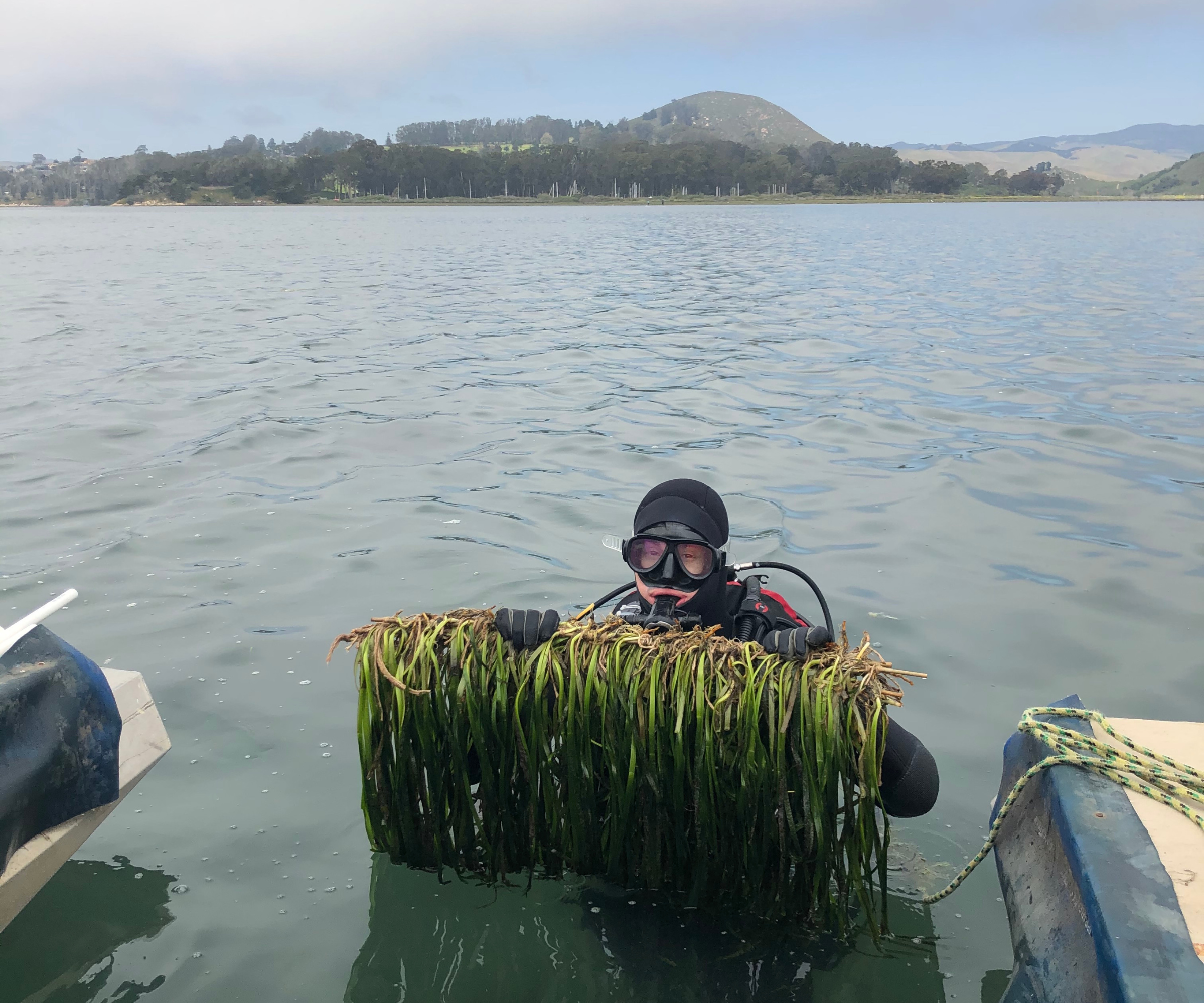
Eelgrass Blog Posts
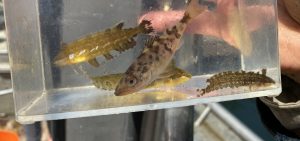
Field Updates: Fish Response to Eelgrass Recovery in Morro Bay
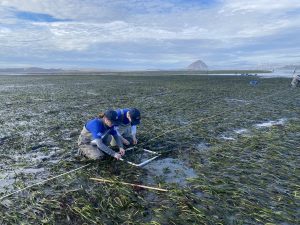
December 2024 Field Updates: Fall Eelgrass Monitoring and Research Efforts
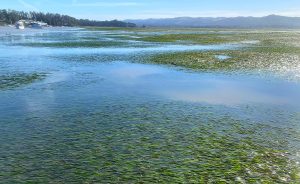
Morro Bay Eelgrass: How did we get here and what does the future hold?
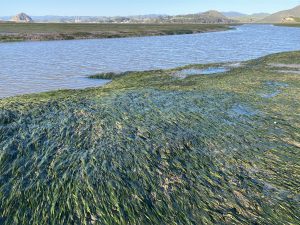
Widespread Eelgrass Recovery Results in Highest Recorded Acreage

Field Updates June 2024: Eelgrass in Bloom – Monitoring Eelgrass Reproduction in the Estuary
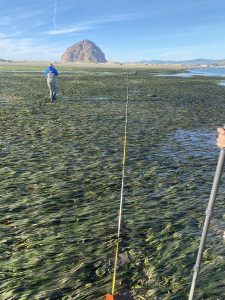
Can Artificial Intelligence Help Save Eelgrass from Wasting Disease?
Want to learn more?
Visit our recent blog posts related to eelgrass and read our restoration and monitoring reports on our library webpage. For more information, contact restoration.support@mbnep.org.